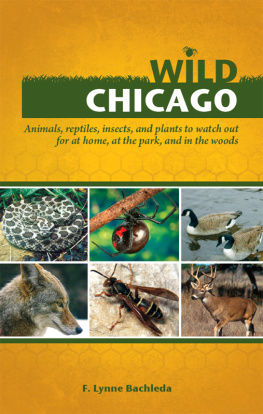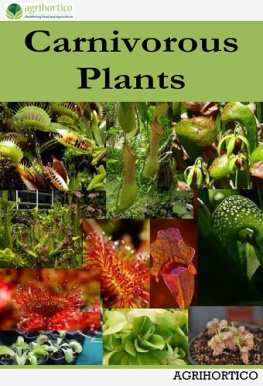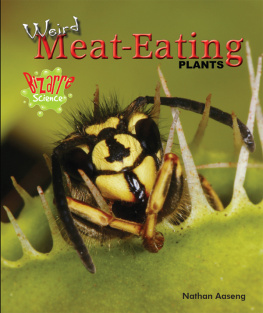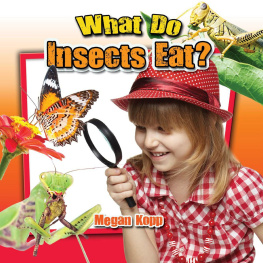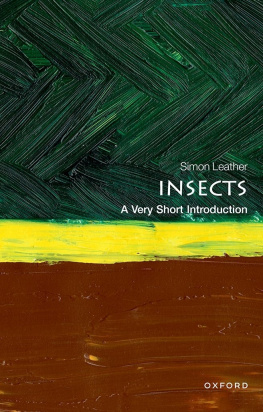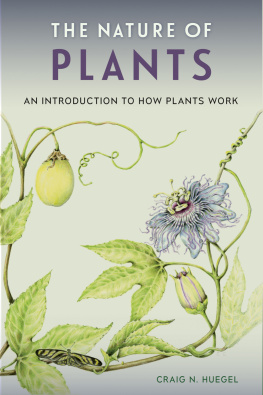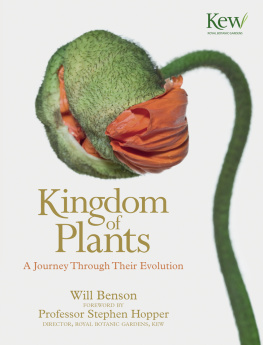To Jerome Su , who inspired this book after our walk through the campus grounds of National Taiwan University in Taipei
A special thanks for technical support on the initial draft to botanist James Boyer, Vice President for Childrens Education, New York Botanical Garden
Text copyright 2017 by Wiley Blevins
All rights reserved. International copyright secured. No part of this book may be reproduced, stored in a retrieval system, or transmitted in any form or by any meanselectronic, mechanical, photocopying, recording, or otherwisewithout the prior written permission of Lerner Publishing Group, Inc., except for the inclusion of brief quotations in an acknowledged review.
Twenty-First Century Books
A division of Lerner Publishing Group, Inc.
241 First Avenue North
Minneapolis, MN 55401 USA
For reading levels and more information, look up this title at www.lernerbooks.com.
Main body text set in Bembo STD Regular 12/15.
Typeface provided by Monotype Typography.
Library of Congress Cataloging-in-Publication Data
Names: Blevins, Wiley, author.
Title: Ninja plants : survival and adaptation in the plant world / by Wiley Blevins.
Other titles: Survival and adaptation in the plant world
Description: Minneapolis : Twenty-First Century Books, [2016] | Includes bibliographical references and index. | Description based on print version record and CIP data provided by publisher; resource not viewed.
Identifiers: LCCN 2016021288 (print) | LCCN 2016018339 (ebook) | ISBN 9781512428537 (eb pdf) | ISBN 9781512410136 (lb : alk. paper)
Subjects: LCSH: PlantsAdaptationJuvenile literature.
Classification: LCC QK921 (print) | LCC QK921 .B54 2016 (ebook) | DDC 581.4/7dc23
LC record available at https://lccn.loc.gov/2016018339
Manufactured in the United States of America
1-39561-21260-8/17/2016
9781512439144 ePub
9781512439151 ePub
9781512439168 mobi
Contents
Introduction
A Secret, Remarkable World
Conclusion
Plants and Humans: A Love Letter
Introduction
A Secret, Remarkable World
What can communicate but has no mouth, can smell but has no nose, and can attack but has no hands?
The answer: a plant! When you think about plants, you might admire the beauty and sweet fragrance of flowers, appreciate the taste of fruits and vegetables, or think about the many products we get from wood, such as furniture or paper. But you might not realize that plants are far more complex than their beauty, taste, and utility in everyday life and that many are in a constant struggle with one another for survival. Every day, plants wage a fierce battlea struggle for the best soil, the most direct sunlight, and domination of the lands resources. Unless we observe plants carefully, humans mostly miss these struggles, because they occur at a slow pace and almost silently.
The scientific study of plants is called botany. Botanists observe, research, and record plant behavior, and plants certainly have some surprises for us. From plants that act aggressivelyalmost like ancient ninja warriorsto those that behave like secret agents and tricksters, the world of plants is as diverse and action-packed as it is fascinating.
Some plants, such as the stinking hellebore and the skunk cabbage, emit odors that are offensive to humans. But the odors attract the insects and animals that pollinate these plants as part of reproduction. Without pollination, these plants would become extinct. Other plants, such as the laughing bumblebee orchid, have evolved over many generations to resemble the insects they need to lure their way for pollination. The Venus flytrap, which grows in mineral-deficient soil, survives by being a carnivore (flesh eater), specifically by eating insects. This plant draws nitrogen and other vital minerals from the bodies of the insects and other small animals it devours. Lithops take the shape of pebbles to trick their plant-eating predators into passing them by.
Skunk cabbages emit a strong odor that attracts insects such as flies, bees, and beetles. The insects carry pollen between male and female parts of skunk cabbage flowers, helping the plants reproduce.
Other plants lie dormant (inactive), appearing dead for periods of time, to survive harsh climates or to deceive hungry animals that might want to munch on their leaves. Parasitic plants, such as the strangler fig, are far more aggressive. They suck host plants to get the nutrients they need to live. They might also hog all the sunlight and water in the area. This sometimes results in the host plants death. Plants also use botanical tricks to disperse their seeds over a wide area. For example, the spiny seedpods of burdock burrs grab onto animal and human passersby, who unknowingly carry the seeds with them to new spots, where they will sprout and grow. The seedpods of some fruit plants explode like mini bombs, shooting seeds over a wide area to ensure that new plants of the species will grow there.
Plants use various methods to disperse their seeds over a wide area. Some plants rely on the wind to blow seeds to new spots. The seeds sprout and grow in the soil where they land.
You might have some of these sneaky, creepy, and sometimes violent plants in your own backyard. One or more of these plants might even be lurking in your home in a decorative pot. You might see some of these plants at a local park or community garden. They live in a world few people regularly notice, but this secret world of plants, with bizarre stories to tell, is waiting to be discovered.
Evolution 101
Ukrainian American biologist Theodosius Dobzhansky once said, Nothing in biology makes sense except in light of evolution. In evolution a species, or specific type of living thing, changes and adapts to its environment over many generations. Famed English naturalist Charles Darwin (18091882) was the first to describe the process of evolution, which he published in his landmark 1859 book On the Origin of Species .
A number of different processes can cause plant species to change. The most common is natural selection (living things pass on to their offspring beneficial traits that help them survive). With each successive generation, the favorable traits become more common, while plants with less favorable traits do not reproduce and therefore die out. Natural selection often begins with a mutation, or a random change, in a plants genes. Genes are chemical structures made of deoxyribonucleic acid (DNA). They are in the cells of all living things, and they direct the growth, behavior, and reproduction of living organisms. Parents pass on their genes to the next generation. Suppose a mutation in a plants genes results in a new flower color that is very appealing to pollinating insects. With more pollinators, the plant is more likely to reproduce than plants with a less attractive flower color. The plant will pass the appealing color to its offspring, which will later reproduce and continue to pass on the color. Eventually, more and more plants of the species will have the new flower color.
Binomial Nomenclature
Throughout history, numerous scientists have devised ways to classify and identify plants and animals. Some early classification systems included long descriptions of a plants or animals identifying characteristics, often resulting in long and cumbersome names. To streamline identification, eighteenth-century Swedish botanist Carolus Linnaeus (17071778) created a scientific naming system called binomial nomenclature. It consists of just a two-word name for each living thing. The systems name comes from the Greek words bi and nomos (two parts) and the Latin word nomenclatura (name calling).



